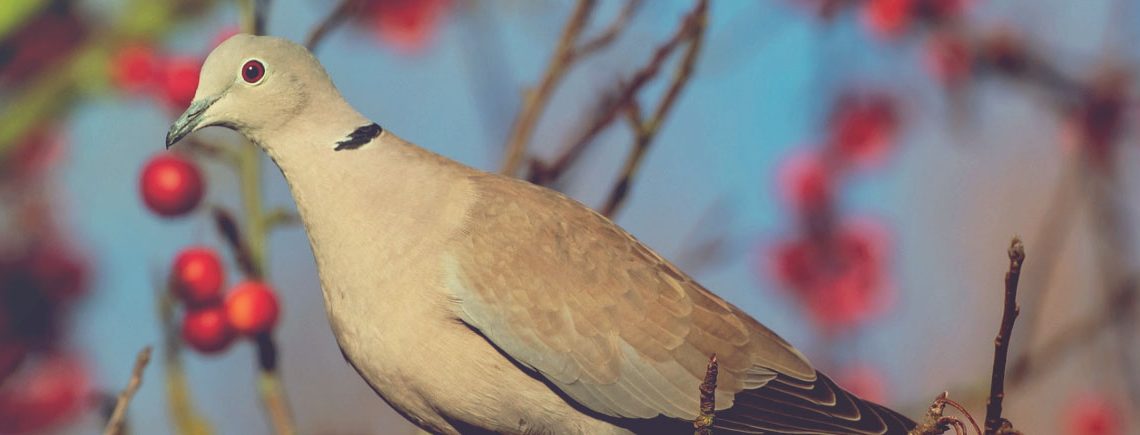The Collared Dove: A Guide to Ireland’s Garden Birds
Known as ‘Fearán baicdhubh’ in Irish, the Collared Dove has been in Ireland only since 1959. They were formerly found in warm temperature regions and subtropical parts of Asia, but have quickly expanded their range in the 20th century and are now found throughout western Europe. They are now resident in towns and villages throughout Ireland.
In this blog post, we’ll guide you through how to spot a Collared Dove in your garden, what to feed it, and the best way to care for it.
What Does a Collared Dove Look Like?
They have a wingspan of 47–55 cm, and a weight of 125–240 g.
These pale grey birds have a dark outer wing feather and a narrow black, white edged collar across the side of their necks. The short legs are red and they have a black bill. Their iris is red, although from a distance they look black.
Both the male and female are virtually indistinguishable; juveniles differ in having a poorly developed collar, and a brown iris.
Collared Doves are smaller and more delicate-looking than woodpigeons, with a creamy grey-buff plumage.

What Do Collared Doves Like to Eat?
The Collared Dove’s diet consists of cereal grain, seeds and fruits of herbs and grasses, and sometimes green parts and insects. Some bird seed mixes have a lot of grain which often gets left behind by Goldfinches and Blue Tits, but is gladly accepted by Collared Doves and other Pigeon species.
They are not wary of humans and enjoy visiting bird tables and feeders in gardens; they can be seen frequently around farms where spilt grain is common around grain stores or where livestock are fed.
How To Feed Collared Doves
As the Collared Dove is a ground feeder, it is recommended that any food left out for them should be on a bird table, ground feeding tray, or directly on the ground. If a tray is secured to the bottom of a hanging feeder they will also use this as a platform to take seed from the feeder.
Where Do Collared Doves Nest?
Their nests are generally quite flimsy in nature, usually just consisting of a platform of sticks. They usually nest in trees or shrubs but will also favour buildings, guttering, and the brackets of security lights or satellite dishes.
The female lays two white eggs, and rotates incubation with the male; she incubating during the night, and the male in the daytime. Incubation usually lasts between 14 and 18 days, with the young fledging after around 15 -19 days. Breeding is takes place throughout the year when food is readily available, though only rarely during the winter, especially areas with cold winters like Northeastern Europe.
What Do Collared Doves Sound Like?
The Collared Dove’s song is a trisyllabic coo, repeated several times and sounds like a ‘goo-GOO-goo.’ The Eurasian Collared Dove also makes a harsh loud screeching call lasting about only a few seconds, sounding much like ‘hah’hah’. It can usually be heard in flight just before landing.

